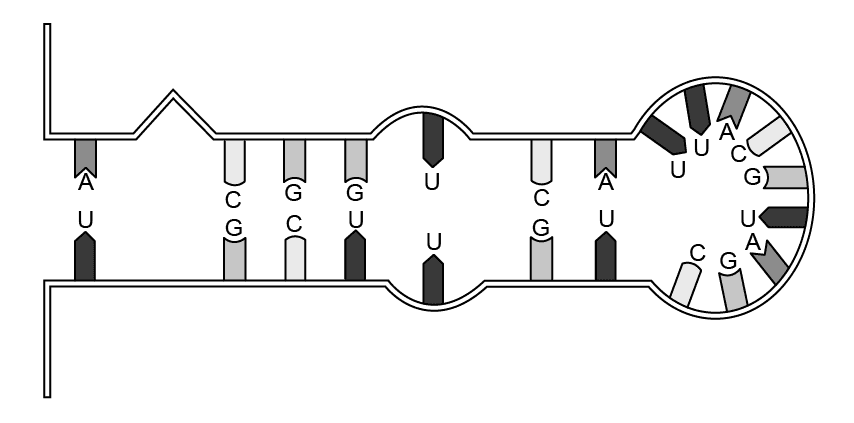Researchers are studying the use of RNA vaccines to protect individuals against certain diseases. To develop the vaccines, particular cells are first removed from an individual. Then mRNAs coding for specific proteins from a pathogen are introduced into the cells. The altered cells are injected back into the individual, where the cells make the proteins encoded by the introduced mRNAs. The individual then produces an immune response to the proteins that will help to protect the individual from developing a disease if exposed to the pathogen in the future.
When introduced into cells, the mRNAs used for vaccines must be stable so that they are not degraded before the encoded proteins are produced. Researchers developed several modified caps that they hypothesized might make the introduced mRNAs more stable than mRNAs with the normal GTP cap. To test the effect of the modified caps, the researchers produced mRNAs that differed only in their cap structure (no cap, the normal cap, or modified caps I, II, or Ill). They introduced the same amount of each mRNA to different groups of cells and measured the amount of time required for half of the mRNAs to degrade (mRNA half-life) and the total amount of protein translated from the mRNAs (Table 1).
TABLE 1. EFFECT OF mRNA CAP STRUCTURE ON mRNA HALF-LIFE AND PROTEIN TRANSLATED FROM THE INTRODUCED mRNA
5' Cap Structure | mRNA Half-Life ± (hours after introduction into cells) (hours after introduction into cells) | Total Amount of Protein
Translated from
mRNA ± (relative to (relative to
amount in normal cap) |
No cap | 1.41 ± 0.02 | 0.011 ± 0.000 |
Normal GTP cap | 16.10 ± 1.83 | 1.000 ± 0.007 |
Modified cap I | 15.50 ± 1.57 | 4.777 ± 0.042 |
Modified cap II | 27.00 ± 2.85 | 13.094 ± 0.307 |
Modified cap III | 18.09 ± 0.81 | 6.570 ± 0.075 |
Based on the data, identify which cap structure is most likely to protect the end of the mRNAs from degradation.






